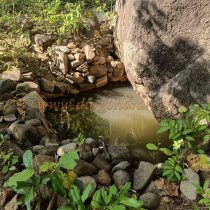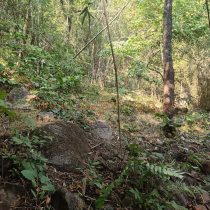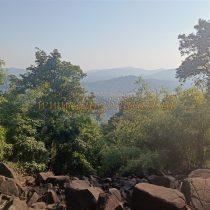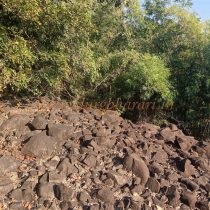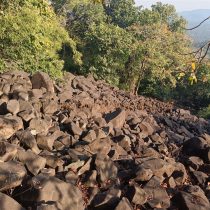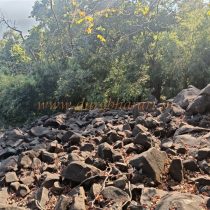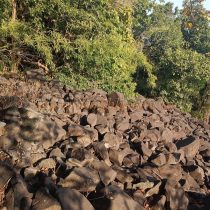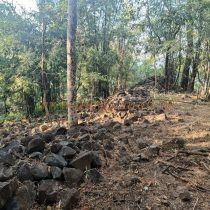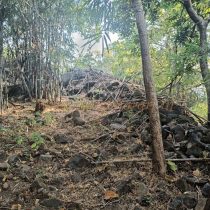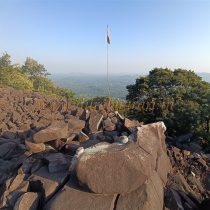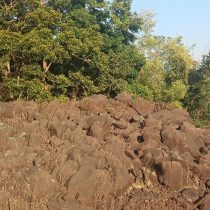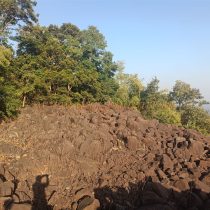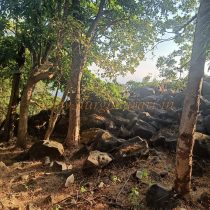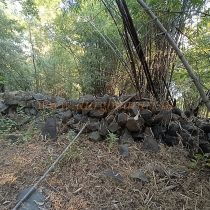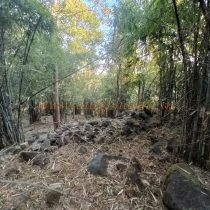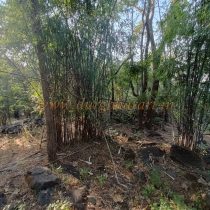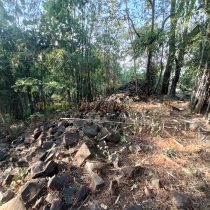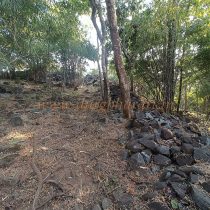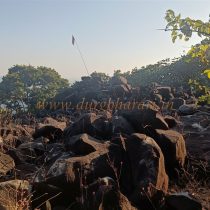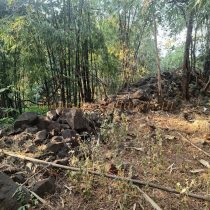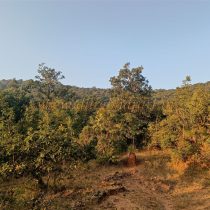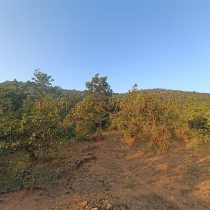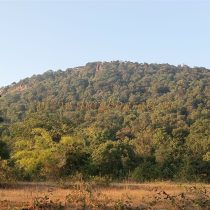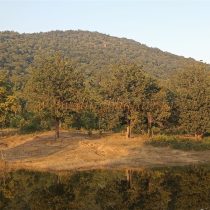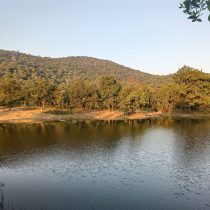BAJAGAD
TYPE : HILL FORT
DISTRICT : GADCHIROLI
HEIGHT : 1647 FEET
GRADE : MEDIUM
There are many forts in Gadchiroli district, but except for one or two forts like Surjagad, Vairagad, other forts have almost disappeared from the map of the district. Although the Naxalism spread here and the Naxalites supporting these forts is the reason behind it, the record of these forts without government courtiers and the apathy towards these forts at all levels is the reason. These forts have lost their identity as scholars have left this area, which is known as a Naxal-affected region. In our Gadchiroli fort tour, we have made an honest effort to track down these unknown forts and present their decaying existence to the people. As this part of Vidarbha is sparsely populated, one should use a private vehicle for both travel and safety while visiting the forts in this area, otherwise it is difficult to see even one fort in a day.
...
We included this fort in our trekking list as we came to know through Shivneri trekkers that there is a fort called Bajagad on a hill near Kulbhatti village in Dhanora taluka. After staying at Kurkheda for the night, the next day we visited two forts namely Jhaparagad, then Tipagad, and we reached Kulbhatti village near Bajagad. It was two o'clock in the afternoon. Kulbhatti, a village near the fort, is 33 km from Dhanora taluka and 70 km from Gadchiroli. Requesting two locals who were busy harvesting, we took along as guides and marched towards the fort. The foot of the fort is about 2 km from the village. The fort can be reached from the lake at the foot of the fort. Since no one usually goes to the fort, one has to walk through the bushes to get to the fort, so it is necessary to have not one but two local people as guides with you. Be careful when going to the fort as there are bears in this forest. Starting from the lake, we enter a dense forest and in fifteen minutes reach a carved water tank in the lower part of the hill. The water in this tank is potable and available throughout the year. From here we reach the lower part of the fort after a steep climb of about 5 hours. The thick forest on and around the fort is the strength of this fort. Except for two places below the fort, ramparts are not visible anywhere. Where there is no dense forest, the ramparts at two places are also completely dilapidated. After another 20 minutes steep climb from this crumbling rampart, we reach the fort. A rampart has been erected on the top of the mountain to completely enclose it. Although the gate of the fort has been destroyed in the course of time, the ramparts are still standing strong. This entire rampart is made of stone only and it is approximately 8-10 feet high and 4-5 feet wide. Bajagad is the highest mountain in this area and its top is 1590 feet above sea level. The biggest attraction of this fort is the metal like ringing stone on the fort. This stone is on a bastion with a flag. When this stone is played with another stone, different sounds are produced like a brass bell. This stone is the place of worship of the Gondi tribes. Although the fort is largely covered by thickets, the entire fort can be explored from ramparts. The remains at the top may have been destroyed by vegetation or buried. 15 minutes is enough to see the fort. From here it takes an hour to go back to the base. A minimum of four hours is required to see the entire fort. Unlike many other forest forts in Gadchiroli district, there is no reference or information available about Bajagad fort. Since this fort in Vidarbha is not known to anyone, the history of the fort is obscure, but seeing the influence of the Gond dynasty on this region, it seems that the fort was built by the Gond kings. This fort under the rule of the Gond kings has lost its identity today.
© Suresh Nimbalkar

